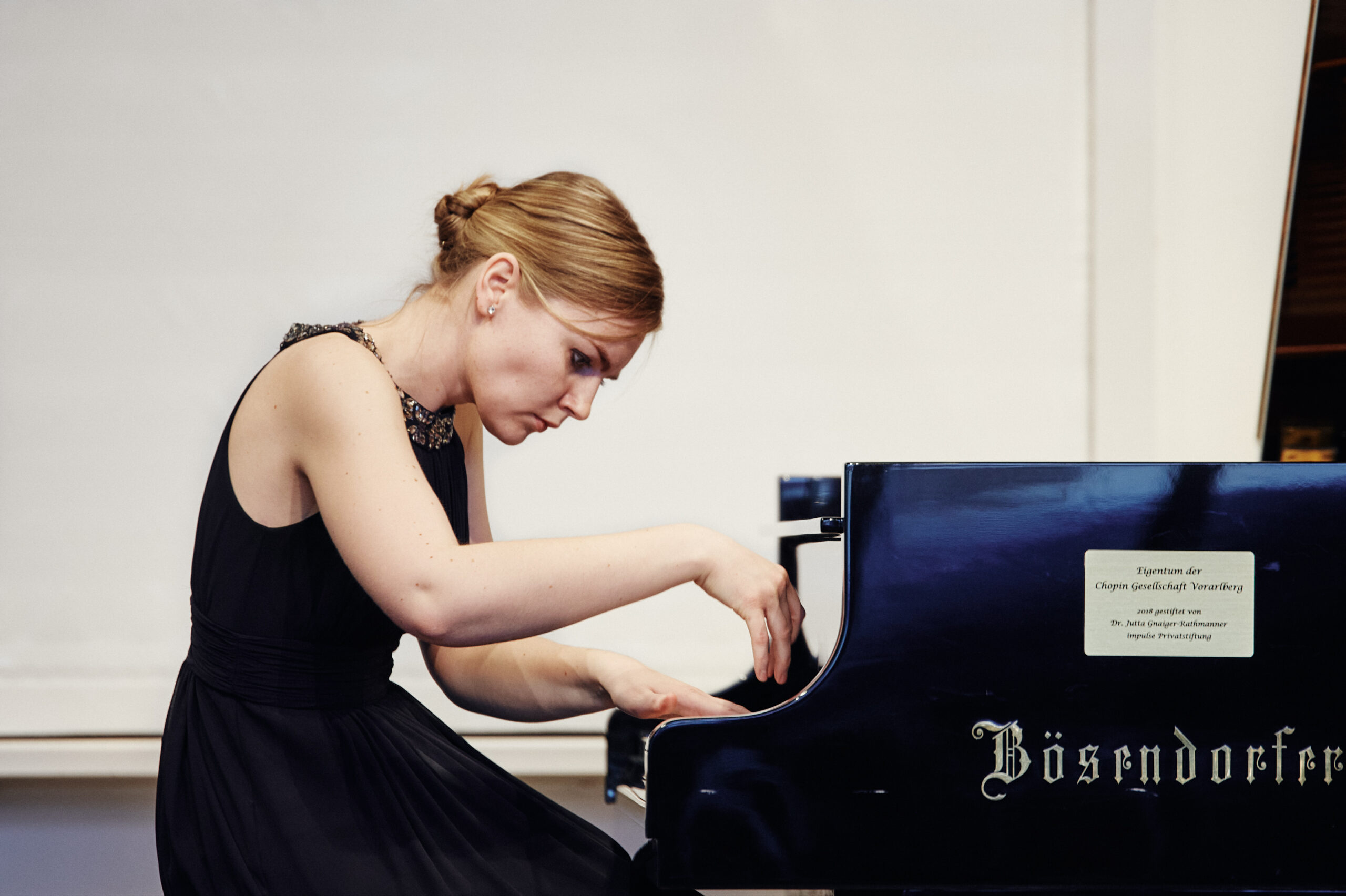Concert review by Silvia Thurner in the Zeitschrift für Kultur und Gesellschaft, April 26th 2021.
Since last October, pianist Hanna Bachmann had been unable to perform before a live audience. Invited by the Chopin Society, she gave an inspired piano recital at the Pförtnerhaus in Feldkirch, attended by a hundred listeners. In Beethoven’s Piano Sonata No. 30, Op. 109, as well as in Frédéric Chopin’s four Scherzos, the 28-year-old musician’s virtuoso versatility and interpretative power were impressively on display. In addition, through the eloquent Variations on an Original Theme, she introduced the audience to the English composer Ethel Smyth.
Hanna Bachmann has launched an impressive career in recent years. With two solo albums, she demonstrated her versatility while also taking on a challenging theme: humour in music. For some time now, she has also been performing with Franz-Markus Siegert (violin) and Roland Lindenthal (cello) as part of the Schwarzenberg Trio. Their recently released album has already attracted significant attention.
In her choice of repertoire, the ambitious pianist did not take the easy route, and so from the very beginning the exciting question arose: how would Hanna Bachmann shape the multifaceted Beethoven Sonata No. 30? With a powerful touch, she developed the energy-charged opening movement, giving the themes both weight and momentum. Particular attention was devoted to the lyrical Andante theme, which she allowed ample space to unfold. With this gentle approach, she created the best conditions for the transparent development of the variations.
In every interpretation, Hanna Bachmann engaged in a dialogue with herself and the musical themes, shaping the essence of each composition in meticulous detail. With her focus and concentration, she captivated the attentive audience, filling the Pförtnerhaus with an inspired atmosphere.
She played Frédéric Chopin’s famous Scherzos with great virtuosity. A strong flow of energy defined the Scherzo No. 1, Op. 20, in which she modelled the contrasting themes with precision and created a beautiful balance between the virtuosic passages and the lyrical middle section. At the breathtaking tempos, however, the occasional slip did occur. In the second Scherzo, Op. 31, Bachmann unfolded a question-and-answer dialogue, imbuing it with a theatrically communicative expression. The play of shimmering tonal colours, with its earthy main theme and cascading runs, marked the third Scherzo, Op. 39. She also gave a transparent account of the fourth Scherzo, Op. 54.
Drawing attention to rarities
In the middle section of her recital, Hanna Bachmann presented the Variations on an Original Theme by the English composer Ethel Smyth, thus offering an encounter with a fascinating early-20th-century figure whose oeuvre is only now gaining the attention it deserves. With calm assurance, Bachmann introduced the theme and played with its harmonic colors. In variating musical characters, the piece unfolded with chromatic surges, rising gestures, and an ever-expanding range. Yet the original theme remained ever-present, creating a vividly narrative quality with multiple strands of development.
As a charming encore, the pianist offered Dora Pejačević’s Violet, also featured in her home video series The Sound of Spring. It was a warm and delightful gesture of thanks for the audience’s heartfelt applause.
